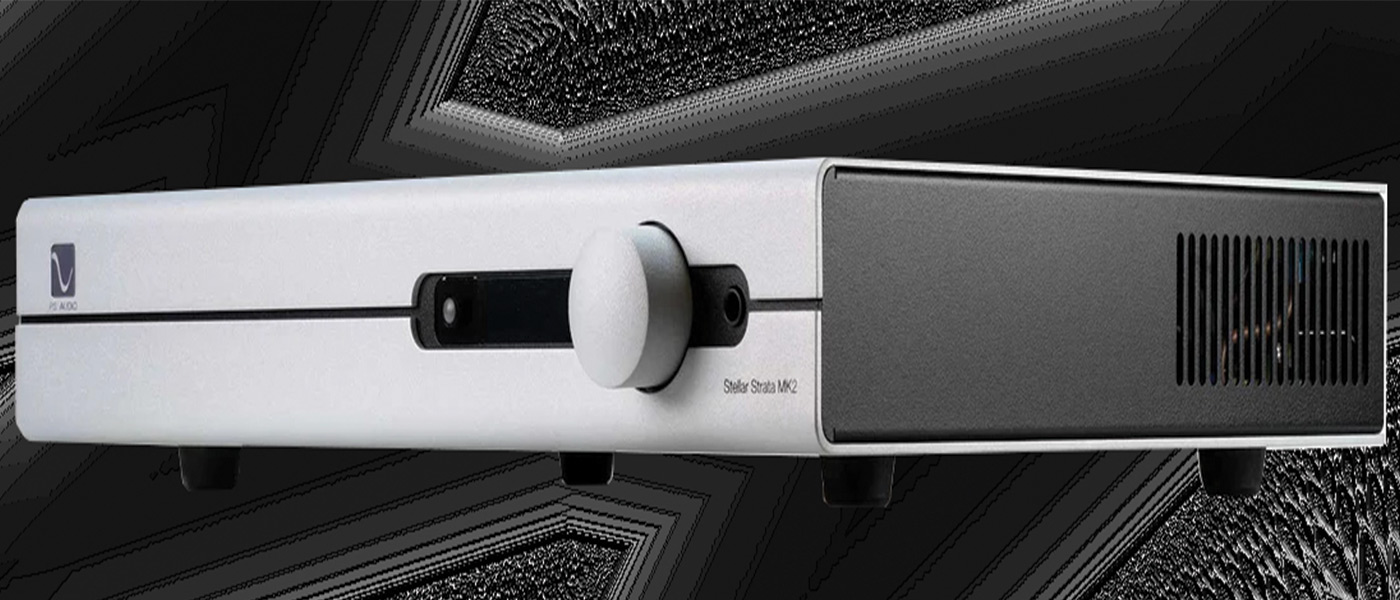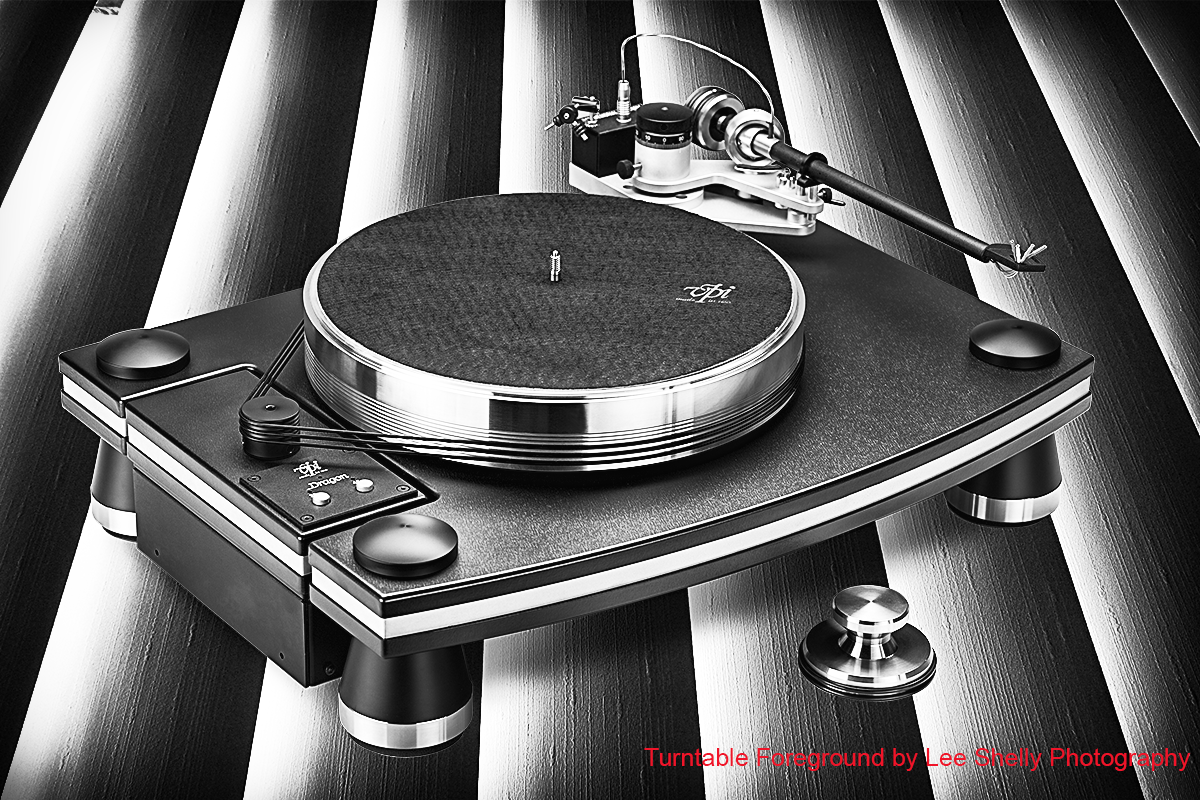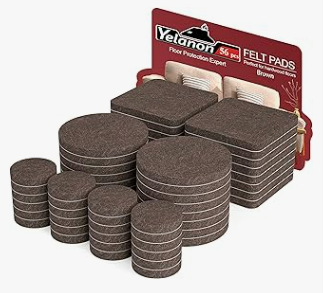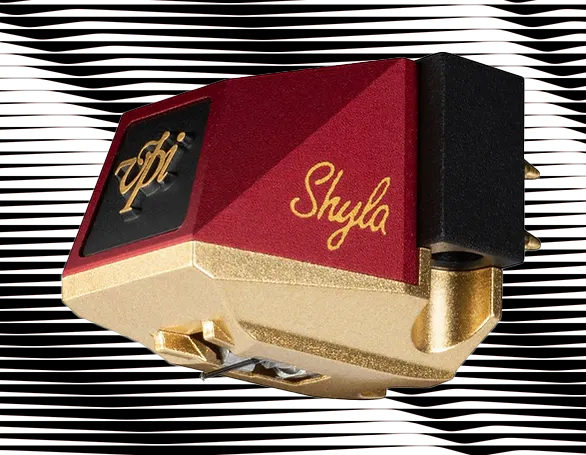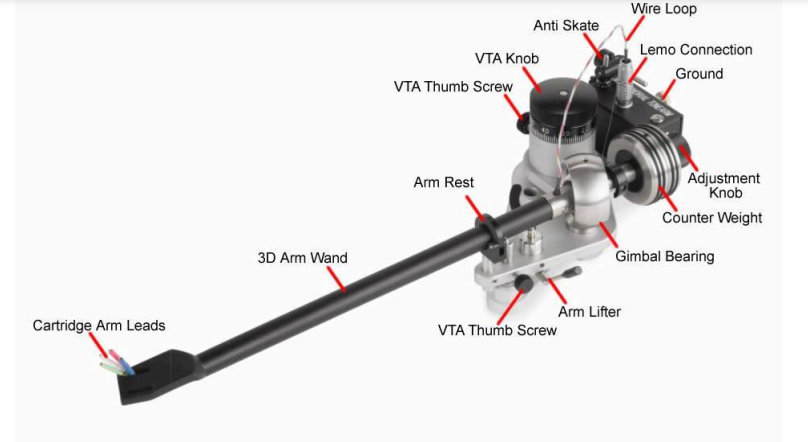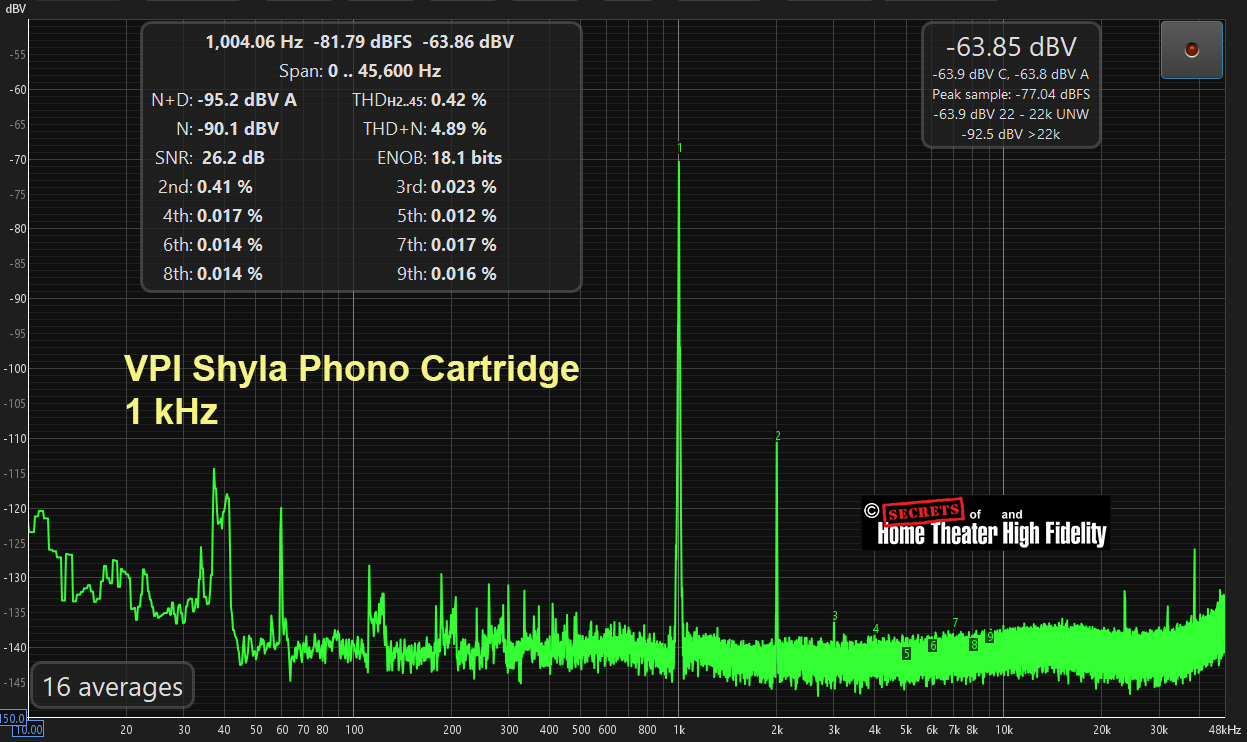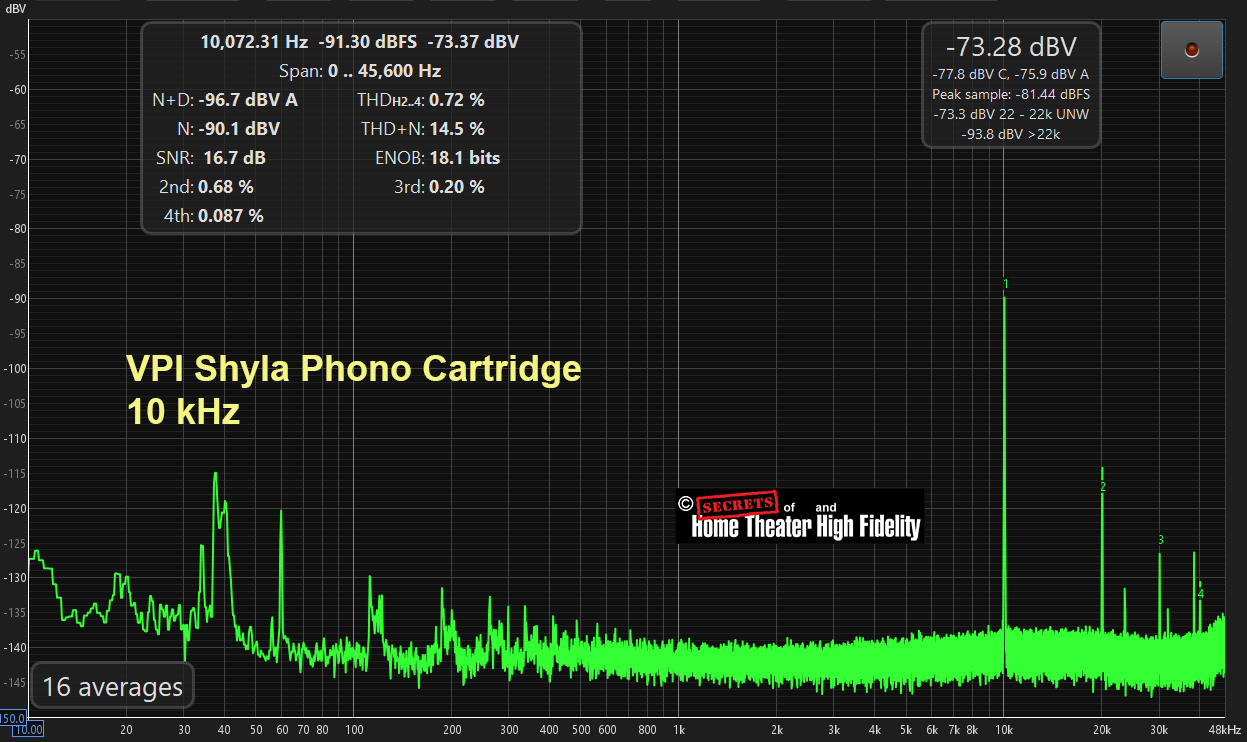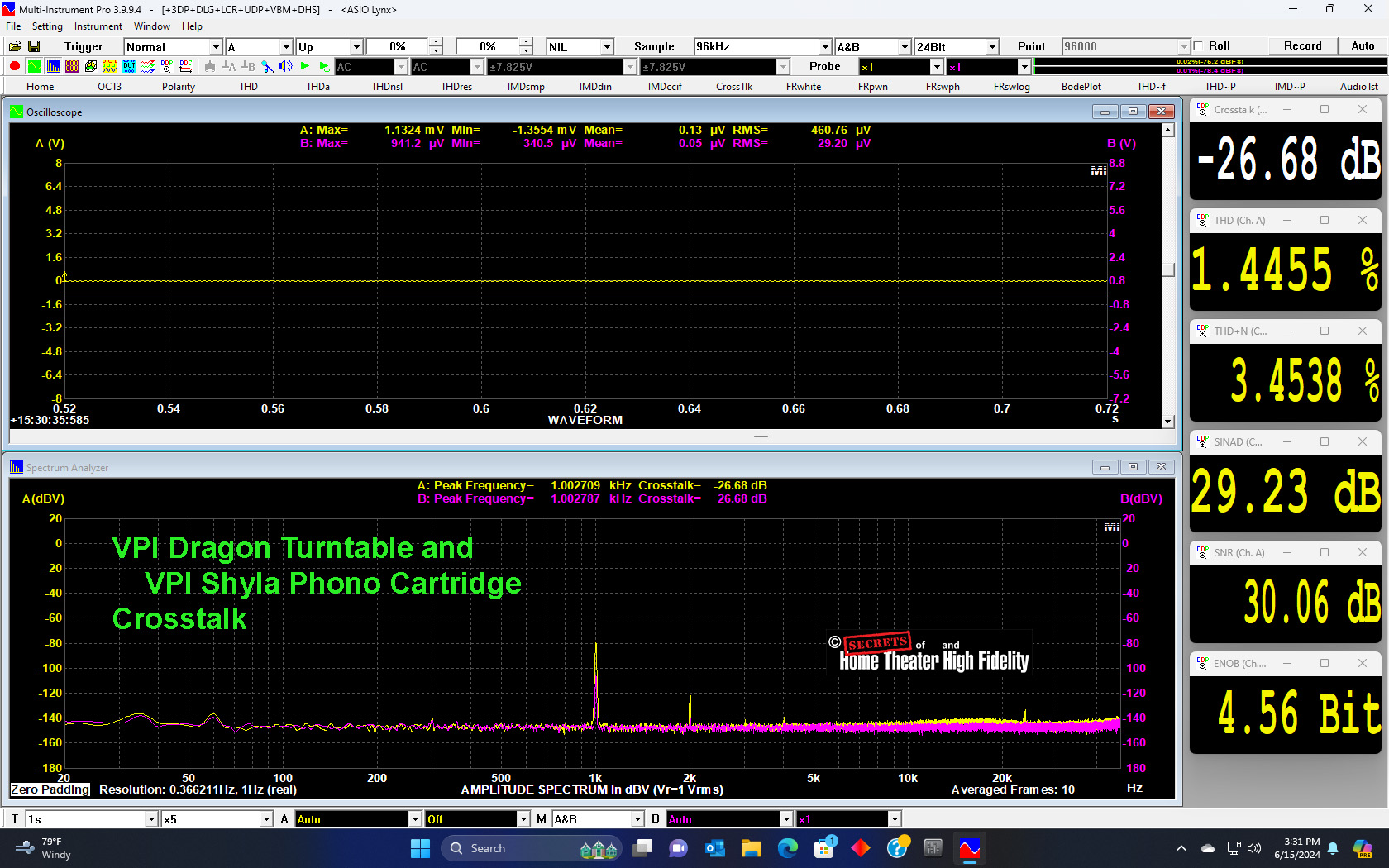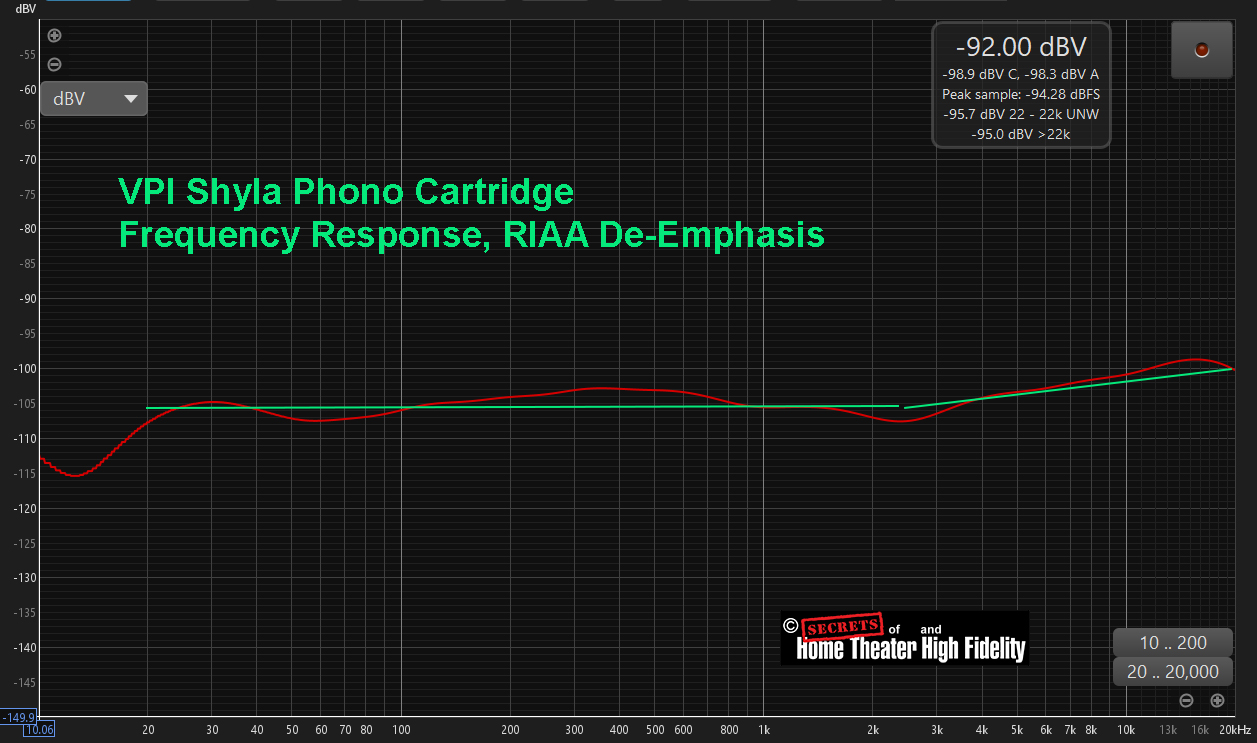Their specialty is turntables (TT), very big, very heavy, and generally very high-end.
I was given the opportunity to review their Dragon turntable, and they included a VPI Shyla MC phono cartridge.
VPI Dragon Turntable and VPI Shyla Phono Cartridge Highlights
- Massive build (Dragon)
- Very low Wow & Flutter (Dragon)
- High resistance to vibration (Dragon)
- Warm sound with increasing FR at higher frequencies (Shyla)
- Very responsive to high level tracks (Shyla)
A long time ago, I purchased my reference turntable (TT), a VPI HRX. I have used it ever since.
I wanted to see what improvements in TT design they have made over the years, so I asked them to send me a TT of their choice. It was a Dragon. They also included a VPI Shyla Movie Coil (MC) phono cartridge.
The Dragon is dark gray with chrome.
It also is available (if any of them are left) with a brown leather plinth, shown in the photo below. The VPI platform is a additional option.
VPI Dragon Turntable Features
- Integrated motor-drive electronics, comprising two low-distortion oscillators and a class-AB electronics
- Optimized drive system with mechanically isolated enclosure and triple-belt drive
- High-torque AC synchronous motor
- Stainless steel shaft spinning in an inverted phosphor bronze bushing
- Precision-machined pulley and triple-belt drive system
- Highly damped, vinyl-wrapped MDF and aluminum sandwich main chassis
- Machined Delrin and aluminum feet with a vibration-damping polymer core
- Platter machined from solid aluminum with an MDF damping layer rotates on an inverted bearing
VPI Prime Gimbal 10-3D Tonearm Features
- Bearing Type: Full Gimbal
- Internal Wire: VPI Copper Weave
- Pivot to spindle: 258 mm
- Effective length: 273.4 mm
- Effective mass: 10.2g.
- Overhang: 15.4 mm
- Offset angle: 19.98 degrees
- Average RMS distortion: 0.31%
- Material: 3D Technology Consisting of but not limited to Epoxy resin and Delrin materials, copper, aluminum and steel
- Product Notes: Adjustable Counterweight, Azimuth side weights, VTA, and Limo Connection
VPI Dragon Turntable
CHASSIS COMPOSITION:
Vinyl Wrapped MDF and Steel
PLATTER:
12″ Aluminum, MDF Damping Layer, 20 Pounds
MOTOR SPEED:
300 RPM
MOTOR SPEED ACCURACY:
0.05%
MOTOR PULLEY ACCURACY:
± 0.0005″
WOW & FLUTTER:
0.1%
RUMBLE:
80 dB Below Signal
DIMENSIONS:
21-3/8″ x 15-3/4″
WEIGHT:
58 Pounds
MSRP:
$8,800 USD (does not include cartridge)
Website:
Company:
SECRETS Tags:
VPI, VPI Industries, Dragon, Turntable, Shyla, Phono Cartridge
VPI Shyla Phono Cartridge
TYPE:
Moving Coil (MC)
FREQUENCY RESPONSE:
15 Hz – 50 kHz
RECOMMENDED TRACKING FORCE:
1.6 – 2.0 Grams
CHANNEL SEPARATION:
30 dB at 1 kHz
OUTPUT:
0.6 mV, 1 kHz @ 5cm/sec
STYLUS (DIAMOND TIP):
Special Line Contact
CANTILEVER:
Boron
COMPLIANCE:
15 x 10-6 cm/dyne @ 100 Hz
DIMENSIONS:
0.68″ H x 0.67″ W x 1.01″ D
WEIGHT:
0.30 Ounces
MSRP:
$2,000 USD
Secrets Sponsor
The design of the VPI Dragon TT is straightforward. It has a 31 pound plinth (the base), a 25 pound platter, and about 2 pounds for the tonearm and its mount. The platter bearing is deep and is lubricated with a heavy bearing grease. Centering of the platter spindle over the bearing is very precise, and this is important for keeping wow & flutter to a minimum (0.1%).
Assembly includes placing the platter onto the bearing, putting the rubber belts around the platter and the motor assembly, and attaching the motor power supply to the motor. The motor assembly is separate from the turntable, and it has to be inserted into the space provided for it on the left side. Below, you can see the motor assembly in place with the rubber belts attached, and the motor switched on to 33-1/3 RPM.
There are four switches that need to be on for the motor to run. One is a power on/off toggle on the side of the motor assembly next to the AC socket, a second power on/off toggle on the front of the power supply, a third switch called “Start/Stop” next to the 33-1/3 RPM dial on the front of the power supply, and lastly, the button on top of the motor assembly shown in the photo below.
Here is the motor power supply (photo below). It can be placed anywhere within reach that you like. It connects to the wall 120 Volt AC, and a second cable goes to the motor. You power it on with the toggle on the left end, and then press the start button. There is a set of buttons on the motor power supply as well as the plinth to select the speed. You can individually adjust the speed at 33-1/3 RPM and 45 RPM separately using dials on the power supply. A stroboscopic disc is included along with an LED light device to check and adjust the two speeds.
There are three rubber belts that have to be placed around the platter and the top of the motor assembly (called the pulley). To do this, the motor has to be in place. Then take each belt and place it around the platter and onto the motor pulley, starting with one of the pulley grooves near the bottom of the pulley. Place your finger on top of the belt on the platter and turn the platter while using your finger to guide the belt into the groove near the bottom of the platter so that the belt is horizontal all along its perimeter with the platter groove and pulley groove. Then, do the same thing with the second and third belts, one above the other.
When completed, make sure all the belts are absolutely horizontal to the plinth next to the sides of the platter. Then, use the adjustable plinth feet to insure the plinth is level to gravity (use a bubble level, available on Amazon). They are adjusted by turning them. If the plinth is then raised above the motor pulley after doing this, such that the rubber belts are no longer horizontal, you may need to place felt pads under the motor’s four feet to raise the pulley so that the belts are again horizontal. Felt pads are available on Amazon.
Once it is all assembled (you need to be careful due to the massive weight of the TT), the phono cartridge has to be mounted.
In this case, I mounted the included VPI Shyla MC cartridge to the tonearm head. Here is where you need to be really careful. Using forceps (tweezers), each of the four color-coded wire connectors has to be pushed onto the respective color-coded cartridge pins. This is not easy to do. Make sure your hands are clean. Grip the cartridge on the sides. If the cartridge comes with a cover, leave it on for the mounting procedure. You can see the plastic cover on the Shyla at the bottom. If you are doing this without a cover on the cartridge, be extremely careful not to touch the stylus (the diamond tip).
The cartridge is then mounted onto the tonearm head using screws. Leave them just slightly tightened. Then adjust the cartridge so that the front edge is parallel with a line drawn from the spindle to the outer edge of the platter. This results in the horizontal tracking angle (HTA). You can use a protractor for this purpose, and a protractor is included. Usually, the point of being parallel is only in one spot (the center of the vinyl LP) since the arm rotates at the gimbal in a circle. So, there is a slight non-parallel position at the outer edge (the outer LP track) and the innermost edge (the inner LP track). That is just the way things are with turntables.
Here is a photo of the included protractor.
When mounting the phono cartridge, you can also mount the included finger lift which is a thin metal strip. Its mount is the same screw holes as the phono cartridge is mounted to. I didn’t bother putting it on as I use the hydraulic tonearm lift for that purpose.
After that, I adjusted the tracking force of the cartridge. The VPI Shyla has a tracking force range of 1.6 – 2.0 grams. I adjusted it to 2 grams. There are mechanical tracking force measurement devices, but I prefer the electronic digital ones. You can find them on Amazon. They are inexpensive and a must-have for any vinyl aficionado.
The vertical tracking angle (VTA) has to be adjusted too. This means adjusting it so the tonearm is parallel to the surface of the platter when an LP is on the platter. For the VPI Dragon, there is a large black dial with markings on the sides for adjusting the angle. In the photo below, you can see the dial in the center, as well as the gimbal tonearm bearing, the cartridge electrical wires, the hydraulic tonearm lift lever, and the counterweight at the rear of the tonearm. There is a black knob at the rear end of the tonearm counterweight which is rotated to adjust the tracking force. There are two thumb screws you need to loosen in order to adjust the VTA dial. They are labeled “VTA Thumb Screw” in the second photo (diagram) below. You can also see a small nylon string that is attached to the tonearm and a weight at the other end. This is the anti-skate mechanism.
The azimuth is adjusted by loosening two set screws and rotating the tonearm until the front edge of the cartridge is parallel with the surface of the platter.
After all the adjustments, check the tracking force again to make sure it has not drifted during the various adjustments.
All set to go.
I listened to my vinyl collection and some new LPs that just arrived from Elemental Music using the review VPI combo, a Pass Labs XP-27 Phono Preamplifier, Pass Labs XP-32 Preamplifier, Balanced Audio Technology VK-500 Stereo Power Amplifier, and Sonus faber Lilium Speakers. The cables were from Clarus Cables.
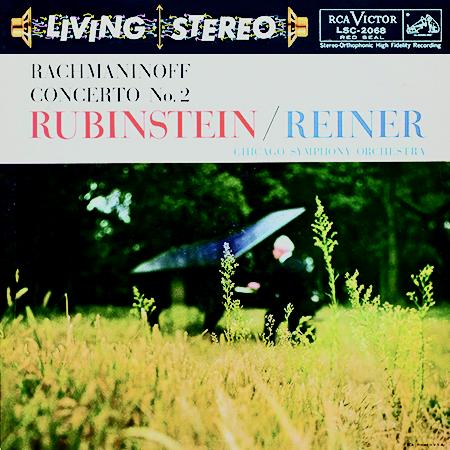
Rubinstein / Reiner, Chicago Symphony Orchestra, “Rachmaninoff: Concerto No. 2”
This album (photo to the left), Artur Rubinstein, Rachmaninoff’s Concerto No. 2, Fritz Reiner, and the Chicago Symphony Orchestra, was recorded in 1958, but the re-release is superb. Full-bodied, with a beautiful piano rendition, it sounded wonderful here. The violins were clear and sweet. Cymbal crashes are a good test too, and there are some in this recording. They have a very large number of intense frequencies and are not easy to reproduce, but they sounded full-bodied here. The melody in this piece is one of the most recognizable in classical music.
As I played various LPs. for the cartridge loading, I settled on 320 Ohms and 750 picofarads. I preferred a gain of 66 dB for the proper volume control range in the preamplifier.

The Temptations, “Wish It Would Rain”
Two new re-releases of some very old recordings from the early 1960s just arrived. They are both stereo and if you are young and not familiar with singing groups of yore, you need to find them on Google and have a listen. The first one is The Temptations – Wish it Would Rain, Motown, 1968, Elemental Music, 2023. They were a quintet. Not something you hear these days.
It’s nice to listen to fabulous old music on a fabulous new turntable with a superb new phono cartridge.
The Shyla cartridge is very discerning. Back in the day, real orchestras were used to back up singing groups. For these two Motown releases, they recorded the singing at the same level as the orchestra, so the voices do not stand out. Also, I think they used a slightly different EQ. The midrange is laid back and there is some high-frequency boost. Something Motown liked to do, I guess.
However, even with the boost, violins were easy to listen to. As you will see in the Bench Tests, the Shyla has primarily 2nd-ordered harmonic distortion. This contributes to the listenable violin boost.
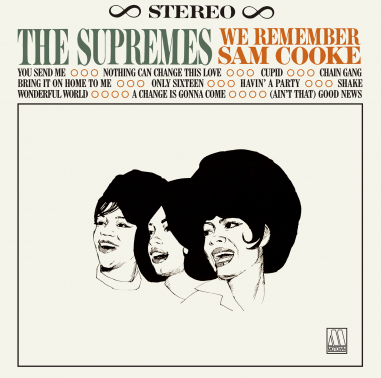
The Supremes, “We Remember Sam Cooke”
The Supremes were also a world-renown singing group, with three members. This re-release is from the original Motown recording in 1965, re-released by Elemental in 2024. It’s entitled The Supremes – We Remember Sam Cooke (Sam Cooke had died). Same sort of equal levels of the singing voices and backup orchestra. Another interesting thing: most of the tracks end with a slow attenuation of the sound. That was the case for the Temptations album too.

Art Pepper, “Art Pepper meets The Rhythm Section”
This Art Pepper album, entitled Art Pepper meets the Rhythm Section is my favorite album period, certainly my favorite classic jazz album. It was superbly rendered on the VPI combo (TT and cartridge). I especially listen for the sheen of the ride cymbal, being played by veteran jazz drummer, Philly Joe Jones. It had a perfect sheen.

Antal Dorati, Minneapolis Symphony Orchesta, University Minnesota Brass Band, “Tchaikovsky: 1812 Festival Overture, Op.49 (Original Scoring) / Capriccio Italien”
This 1958 stereo LP of Tchaikovsky’s 1812 Overture is not the best recording quality (it’s 66 years old), but it does let me see how a phono cartridge can track loud bass drum thuds and cannons, in this case, a 1775 bronze cannon located in Douay, France. The Shyla tracked everything without a hitch, and when it tracks a cannon firing, that’s saying something.
The 1812 Overture, composed in 1882, celebrates Russia’s victory over Napoleon’s invasion of Russia in 1812. It was commissioned to commemorate the completion of the Cathedral of Christ the Savior in Moscow, built to honor Russia’s defeat of Napoleon.
The Overture’s themes include a religious melody played by cellos and violas to convey the Russian people’s suffering, as well as traditional Russian folk songs, hymns, and an adaptation of a Russian Orthodox liturgical hymn. There are also some themes of the French national anthem, the Marseillaise, and a famous cannon fire in the finale that reminds everyone of the battles.

Strauss, Richard, Tchaikovsky, Pyotr Il’yich, Charles Münch, Boston Symphony Orchestra, “Tchaikovsky: Romeo & Juliet – Strauss Till Eulenspiegel”
Here is another RCA recording, this one from 1962, and it was the first classical music album I ever owned. Tchaikovsky’s Romeo & Juliet Overture, Charles Munch with the Boston Symphony. I took a classical music class at the University of Washington in 1964, and this LP was played in class. My then-girlfriend Susan (we wed in 1968) gave it to me for my birthday. I have listened to it over the past decades (I no longer have the original one but have obtained the re-release). It is a terrific version of the classical masterpiece. Violins soar, tympani drums pound and cymbals crash brilliantly.

Ike Quebec, “It Might as Well Be Spring”
Ike Quebec’s (tenor sax) re-release of It Might as Well be Spring, Blue Note, 1961, is a 45 RPM album. Quebec’s saxophone has a beautiful rasp to it that really shines at this speed. The Shyla’s very compliant stylus and cantilever bring out that detail, such as in the title track, It Might as Well be Spring and Lover Man. I wish all vinyl re-releases were at 45 RPM, but they are more expensive because an album takes up two discs, and also, you have to turn the LP over after only about 8 minutes.

Gary Graffman, “The Virtuoso Liszt”
Now here is an interesting re-release. The Virtuoso Liszt, Gary Graffman, RCA, 1960. RCA re-releases are among the finest in the world. The piano is difficult to record and play because there are multiple fundamental frequencies due to having as many as 10 keys being played at the same time. And, if the piano sustain pedal is pressed, with a flourish, there could be hundreds of notes sounding. The Shyla handled it all.
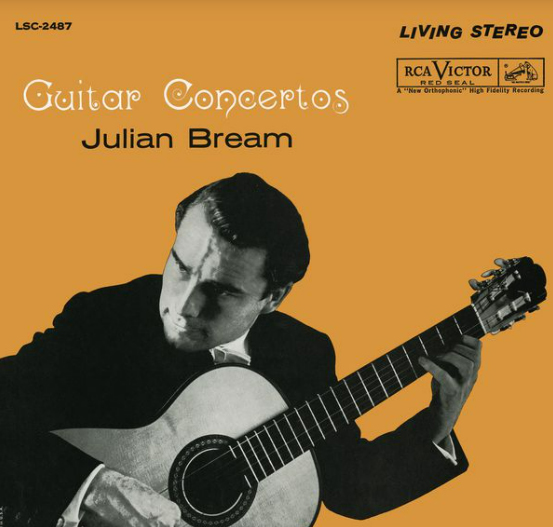
Julian Bream, “Guitar Concertos”
Ah, classical guitar! In this case, Guitar Concertos, Julian Bream, Melos Ensemble (Baroque), RCA, 1961. The guitar is another difficult instrument to record. The plucks of the strings have delicate attack edge transients, but the Shyla played them very clearly. The violins in the ensemble were warm and sweet due to those 2nd-ordered predominant harmonics. When the cartridge output is less than 1 mV, it means there are very few turns of copper wire on the cantilever. That lowers the mass and allows the stylus to track the edge transients. The Shyla delivers about 0.6 mV.
Wow, and Flutter (W&F) is one of the most important issues with a turntable. To achieve low W&F, several things have to be there. One is a heavy platter. Secondly, the platter spindle has to be centered over the bearing as precisely as possible. Third, vibration has to be controlled (it can cause flutter), not only from the motor, but the platter must spin on the bearing as smoothly as possible.
Measuring W&F is a bit tricky because not only do all turntables have at least a little bit of W&F, but all vinyl LPs have at least a little bit too. That includes turntable test LPs.
So, I have devised the following test to get as precise a measurement of the TT W&F as possible, excluding as much of the test LP W&F as can be accomplished.
I place the test LP on the platter, and using the outer 1 kHz track (the test can be done at any frequency between 1 kHz and 3.15 kHz), I make and record the results of 4 tests. Then I stop the TT and turn the test LP one-quarter turn clockwise on the platter, holding the platter still while I turn the LP. Then I run 4 more tests, rotate the LP 1/4 turn, run 4 more tests, rotate the LP 1/4 turn, and run the final 4 tests for a total of 16 tests. Running a set of tests at 1/4 LP rotations with respect to the platter reduces the effects of LP W&F because rotating the LP will make sure the Wow of the TT and LP are in phase for some of the tests and out of phase for some of the other tests. For example, if the Wow of the TT is 0.1%, and the Wow of the LP is 0.05%, the measured Wow for some of the tests will be 0.1 minus 0.05, which is 0.05, and for some of the tests, 0.1 plus 0.05, which is 0.15. The final calculated average Wow will be 0.05 plus 0.15 divided by 2, which is 0.1%, and that value is the correct Wow for the TT. This works when the W&F of the turntable is more than the W&F on the test LP. Assuming the W&F on the test LP is 0.05%, if the TT W&F is 0.02%, the calculated W&F would be 0.05%, and since 0.1% or less is excellent, it does not matter that the calculation actually measured the test LP W&F.
Here are the results (click on the spreadsheet to see a full-size version). The important data are the Peak Frequency, RMS Wow %, and RMS Flutter %. The averages are at the bottom of each column. The Frequency RPM Deviation was 0.005, meaning it was spinning one-half of 1% (0.5%) too fast. I could, if I bothered, reduce the speed a bit using the power supply. But, unless I was trying to play a properly tuned piano along with the music, I would not bother fiddling with the speed control. The 0.05% spec refers to variation in speed from whatever setting you adjust it to, ± 0.025%.
The measured RMS Wow was 0.09% (the green box) which is just below 1/10th of 1%. RMS Flutter was 0.10% (the orange box). So, both Wow and Flutter were right on spec. The RMS W&F is 0.15%, but the separate W&F measurements (Wow separate from Flutter) are more important because if one of them is way out of spec, the combined measurement will not indicate which one is the culprit.
Below is a spectrum for a 1 kHz sine wave generated by a test LP. I did not use a phono preamplifier for this as I did not want the distortion spectrum to be complicated by an additional variable. You can see that THD is low at 0.42%, and the primary harmonic is 2nd-ordered. The second spectrum is a 10 kHz sine wave, and it also has the primary harmonic as 2nd-ordered. This means the Shyla phono cartridge has primarily 2nd-ordered harmonic distortion, making it sound like a very nice triode tube amplifier, which is something analog guys like me really enjoy. The peaks at 11 Hz and 18 Hz are resonances of the tonearm and cartridge combination. This sort of thing produces what is called “rumble” if it is high enough to be heard. There are rumble filters on many phono preamplifiers, and there is one on the Pass Labs XP-27 Phono Preamplifier that I used in this review. However, I could not hear any rumble, so I did not activate the filter.
The next two spectra show how the cartridge handles high-volume (+15 dB VU) tracks. The first one is an outermost track, and the second one is an inner-most track. What one looks for is the innermost tracking to be not very different than the tracking in the outer groove, and that is exactly what occurred here. The results here are due not just to the cartridge, but to the tonearm gimbal smoothness. Note that these tracks are much more intense than you would ever encounter on music LPs. It is a stress test only.
Crosstalk was -27 dB.
The RIAA de-emphasis cartridge frequency response is shown below. I measured it without a phono preamplifier in the circuit, so with less than 1 mV to deal with, the response is a bit bumpy. I created a green line to show what the likely response is, and it is reasonably flat to about 2 kHz, and then slowly rises to 20 kHz.
The vibration of the Dragon was measured in all three axes, with X being parallel to the front and rear of the TT, Y being parallel to the sides, and Z being vertical. The first value is the Maximum Acceleration Amplitude, and the second value is the Maximum Acceleration Amplitude RMS. All values are in M/second2.
X = 0.011/0.004
Y = 0.012/0.004
Z = 0.017/0.005
For comparison, here are the vibration measurements I did, using an inexpensive TT ($499 with cartridge and built-in phono preamplifier):
X = 0.028/0.008
Y = 0.036/0.009
Z = 0.054/0.011
The vibration here is more than twice what it was with the Dragon. It is not necessarily audible in the $500 turntables, but it is always desirable to have it as low as possible. It is one of the factors that can produce flutter.
Vibration is reduced by having a massive platter and plinth. It ain’t rocket science, but it ain’t cheap to manufacture either. The platter and plinth in the VPI Dragon have several layers sandwiched together to achieve this.
Secrets Sponsor
“Ah, the days of yore are back again.”
The VPI Dragon is an excellent turntable. It’s expensive, but as I have said so many times, quality is always at a price, and being an audiophile is an expensive hobby (the word “reasonable” is not in our vocabulary). The VPI Shyla phono cartridge surprised me with its great sound.
- Everything is heavy
- Very smooth gimbal
- Easy to adjust the counterbalance
- The VPI Shyla cartridge is terrific
- Adjustable height on motor assembly feet


